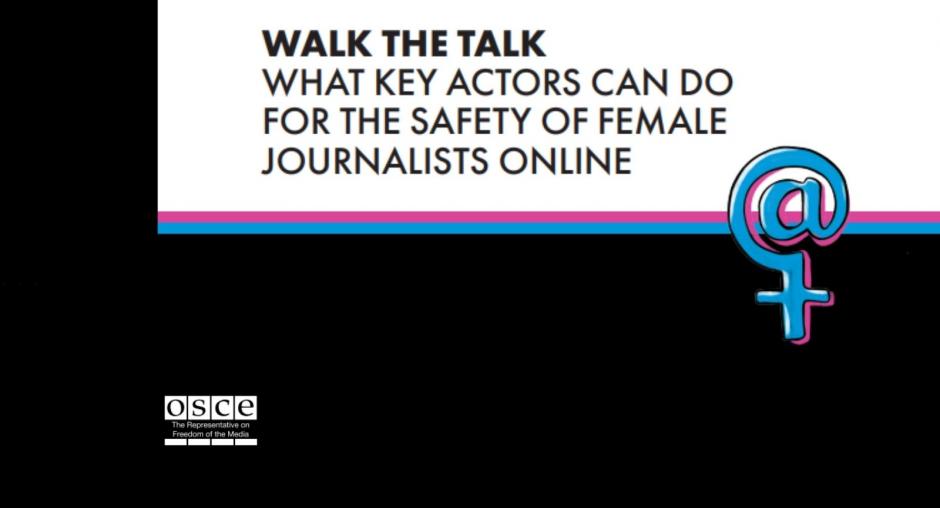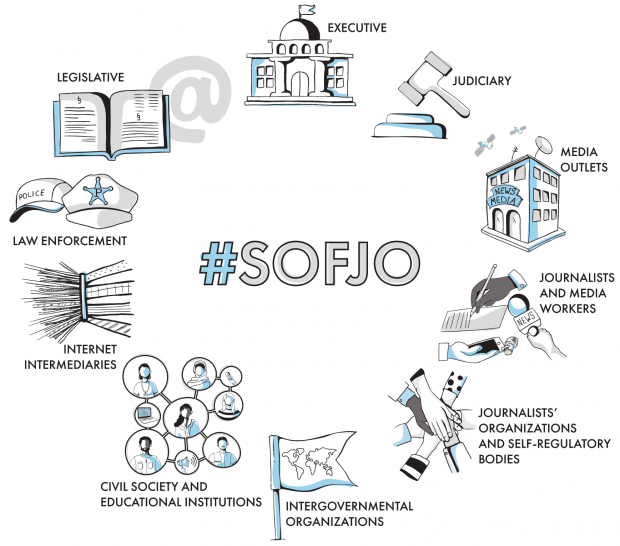#SOFJO Resource Guide

Facing an additional layer of risk
Nearly two out of three women journalists have been threatened or harassed online. Just because of their gender, female journalists face an additional layer of risk, next to the attacks that all journalists are increasingly experiencing. Nowhere do we see this form of harassment and abuse more starkly than in the online sphere.
Hampering freedom of expression
Online harassment and abuse against women journalists has become a major hazardto the profession. One that threatens women journalists’ ability to do their jobs.It violates their right to freedom of expression as much as it hampers free and open access to information for all members of society. “I have thought about coming off social media,” says BBC political editor Laura Kuenssberg in the documentary “A Dark Place”, produced by the Representative on Freedom of the Media (RFoM) in co-operation with the International Press Institute. “But then people who are there, who want information, which is the most important thing for me, then they lose, and then I lose.”
Affecting the quality of our democracies
In short, the safety of women journalists online directly threatens to affect the quality of our democracies. This #SOFJO Resource Guide formulates an answer to that threat, proposing actions to strengthen the way we address the safety of women journalists online.
A platform for raising awareness
Starting in 2015, the Safety of Female Journalists Online (SOFJO) project has generated innovative and sustainable initiatives. It became a platform for raising awareness, for making collective strategies, and sharing tools and resources for female journalists who have been targeted. Conferences, closed group meetings and the social media outreach campaign #SOFJO have helped create a network of support from governments, media organizations, academia and civil society actors across participating States.
Good practices and real action
This #SOFJO Resource Guide aims to assist States and non-State actors across the OSCE region in taking real actions to improve the safety of female journalists online. The practices presented are all examples of ways in which international standards and commitments can be realized. It points at a systemic approach for actors that are central for creating a safe and enabling media environment, providing 40 proposed actions.
All key actors involved
A multi-stakeholder approach is much needed. This #SOFJO Resource Guide provides the key actors with a brief selection of the most relevant and achievable steps. Concrete examples of best practices, put in place by different actors in various countries, illustrate each proposed action. A selection of useful resources complements this list. Lastly, it includes a section on international human rights standards that, over the last decade, increasingly call for a gender-responsive approach to the safety of journalists.
Time to walk the talk
Taken together, these steps form an interrelated structure in which women journalists can continue their profession online in a safer manner. Unfortunately, there is nothing virtual about this form of harassment and abuse. It is a real problem that needs real solutions.
More information on the #SOFJO project can be found here: www.osce.org/fom/safety-female-journalists-online.
Follow #SOFJO on Twitter for the latest updates.









